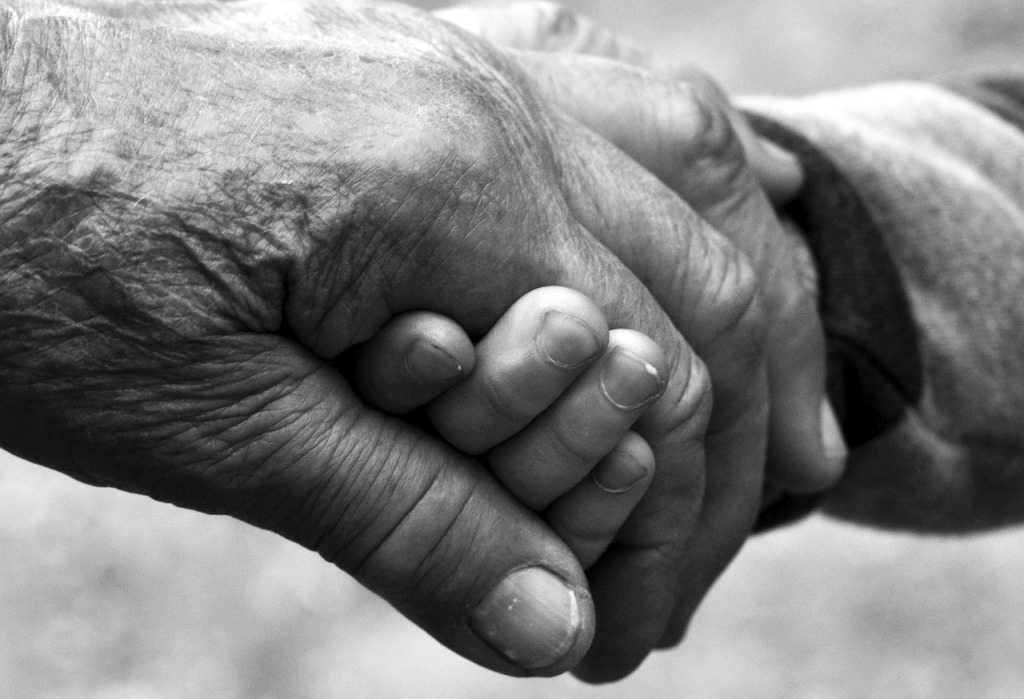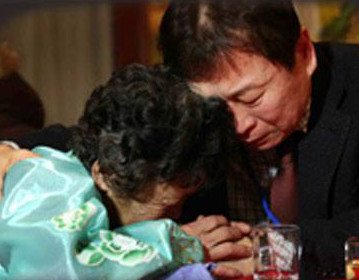Originally posted on February 5, 2015. Updated on January 27, 2019.
The following story is shared by a student from the United States who traveled to South Korea for a leadership exchange program. In it, she discloses an intimate look at the division of Korean families in the North and South, bringing to light the tragic reality of a divided homeland and a Korean Dream, shared by people everywhere, to reunite the peninsula.
As most Koreans born after 1953, I grew up as the child of a divided homeland. I was born in Seoul but my ancestral home remains north of the 38th Parallel. I still have relatives there, as do 10 million other Koreans in the South and the diaspora. This is the shared reality of our people.
Dr. Hyun Jin P. Moon, Korean Dream: A Vision for a Unified Korea
 Her tears flowed over her papery cheeks and down her chin, dripping onto the linoleum floor. Her silver curls swayed as she rocked back and forth.
Her tears flowed over her papery cheeks and down her chin, dripping onto the linoleum floor. Her silver curls swayed as she rocked back and forth.
She grasped his hand tightly with one hand and stroked his cheeks with the other. It was as if she hoped the physical proximity would make her phantom real – but it seemed to make her pain deeper.
This was the heartbreaking scene I witnessed when I was visiting a housing project for North Korean defectors during a summer leadership training program in 2014. I was just one of many from around the world, including the United States, Korea, Japan, and the Philippines, all learning first-hand about the division of Korea.
As an American, I was paired with a Korean high school student who served as my unofficial translator and guide. We communicated through single English and Korean words and filled in the rest with facial expressions and hand gestures.
Together we visited someone I would fondly call Halmonim, Grandma in Korean. I still don’t know her name or how she got to that sanctuary after her harrowing journey crossing the 38th parallel. Before silence overtook her, she told us that she had a grandson who still lived in the North. She observed my Korean partner, touching his face gently and told us that he looked exactly like her grandson.
As she watched his face, two endless rivers began to form in her eyes and silent, shuddering sobs ran through her entire body. The sweets we brought for her remained untouched. We didn’t know what else to do but to sit still so she could keep his hand in hers.
As I looked on helplessly next to Halmonim, my Korean companion and I searched for appropriate words to comfort her, but found nothing, so we chose silence. We sat there the entire time in silence interrupted only by her cries.
Reunions for families divided by North and South are few and always too short. The latest of the very rare reunions took place in August 2018.
Back home, I sat next to my mother on our couch and I wondered about Halmonim’s pain. How would it feel to long for someone so badly, but not be able to see, touch or hear them? Maybe it would feel like a part of me: my arm or my leg was amputated and thrown over a high fence that I could not climb.
Halmonim, is that how you feel when you think about your grandson? The ideological divide runs deeper than the 38th parallel, it cuts through the very heart and body of the Korean people. Halmonim’s tears speak of the pain of being separated from a part of herself.
I think it is time to say, “Enough.” Let’s not shed more tears of division and separation, let’s let tears of reunion and joy begin to flow.
You can be a part of the Korean Dream to reunited the divided homeland. Learn about the One Korea Global Campaign, the 100th Commemoration of the March 1 Movement to be held in Seoul, South Korea, and the 2019 One K Concert.


